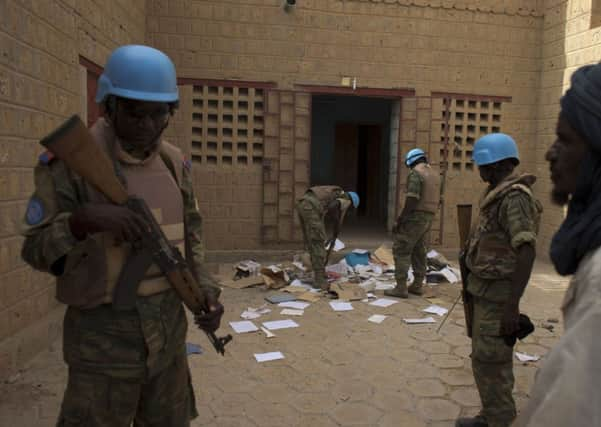Mali: Al-Qaeda’s faith in bomb and balance sheet


Mohamed Djitteye rushed to lock his till and hid behind the counter. He was dumbfounded when instead, the al-Qaeda commander gently opened the shop’s glass door and asked for a pot of mustard. Then he asked for a receipt.
The transaction in northern Mali shows what might seem an unusual preoccupation for a terror group: al-Qaeda is obsessed with documenting the most minute expenses.
Advertisement
Hide AdAdvertisement
Hide AdIn more than 100 receipts left in a building occupied by al-Qaeda in the Islamic Maghreb in Timbuktu earlier this year, the extremists assiduously tracked their cash flow, recording purchases as small as a single light bulb. The often tiny amounts are carefully written out in pencil and coloured pen on scraps of paper and Post-it notes.
The accounting system on display in the documents found is typical of what researchers have discovered in other parts of the world where al-Qaeda operates, including Afghanistan, Somalia and Iraq. The terror group’s documents around the world also include corporate workshop schedules, salary spreadsheets, philanthropy budgets, job applications, public relations advice and letters from the equivalent of a human resources division.
Taken together, the evidence suggests that far from being a fly-by-night, fragmented terror organisation, al-Qaeda is attempting to behave like a multinational corporation.
“They have to have bookkeeping techniques because of the nature of the business they are in,” said Brookings Institution fellow William McCants, a former adviser to the US state department’s office of the co-ordinator for counterterrorism.
“They have so few ways to keep control of their operatives, to rein them in and make them do what they are supposed to do. They have to run it like a business.”
The picture that emerges from what is one of the largest stashes of al-Qaeda documents to be made public shows a rigid bureaucracy, replete with a chief executive, a board of directors and departments such as human resources and public relations. Experts say that each branch of the terror group replicates the same corporate structure, and that this strict blueprint has helped al-Qaeda not just to endure but also to spread.
Among the most revealing documents are the receipts, which show how al-Qaeda’s fighters lived every day.
“For the smallest thing, they wanted a receipt,” said 31-year-old Mr Djitteye, who runs the Idy Market on the sand-carpeted main boulevard in Timbuktu.
Advertisement
Hide AdAdvertisement
Hide AdAn inordinate number of receipts are for groceries, suggesting a diet of macaroni with meat and tomato sauce, as well as large quantities of powdered milk.
Relatively petty amounts are logged with the same care as the $5,400 (£3,280) advance they gave to one commander, or the $330 they spent to buy 3,300 rounds of ammunition.
Keeping close track of expenses is part of al-Qaeda’s DNA, say various experts, including FBI agents who were assigned to track the terror group in the years just after its founding.
This habit, they say, can be traced back more than three decades to when a young Osama bin Laden entered King Abdul Aziz University in Saudi Arabia in 1976 to study economics.